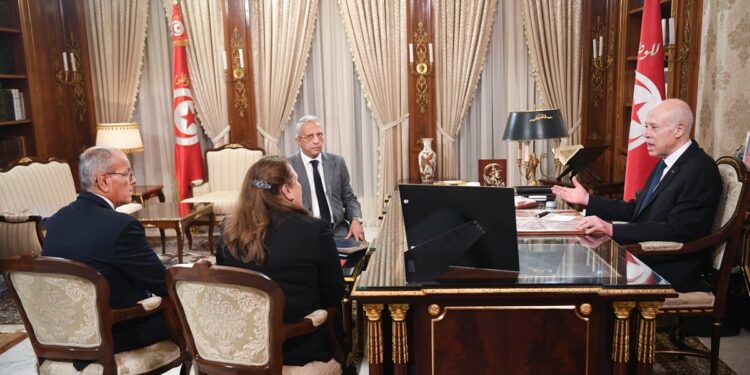In September 2025, the city of Gabès was again the scene of a large -scale environmental crisis. More than 150 people were intoxicated in one month by toxic emanations linked to the chemical complex, including fifty students to Chatt Essalem transferred to the Rabta hospital in Tunis. These incidents, among the most serious in recent years, have aroused local anger and indignation.
It is in this context that the President of the Republic, Kaïs Saïed, brought together Tuesday September 30 at the Carthage Palace three members of the government: Mustapha Ferjani (Health), Habib Abid (Environment) and Fatma Thabet (industry, energy and mines).
A “crime” against life
The Head of State described the establishment of the chemical complex in Gabès as a “real crime” which led to “the assassination of the environment and health”.
“What was accepted in Gabès, when some African countries had refused it, destroyed the oases, the sea and the desert. The environment was murdered, health was murdered,” he said.
For Saïed, the repetition of poisoning illustrates “serious maintenance failures” and the absence of a sustainable protection strategy.
Solutions already on the table
The president recalled that many young people from Gabès had proposed solutions to restore ecological balance and develop energy alternatives, including green hydrogen. But their proposals were ignored. “Our youth is a real national wealth, it is time to listen to it,” he insisted.
Kaïs Saïed announced a two -step approach:
- Immediate response : installation of equipment to reduce toxic emissions and secure the population.
- Global rescue : rehabilitate Gabès over the long term and protect the whole country from “environmental crimes accumulated for decades”.
The Gabès affair goes beyond the local setting. It symbolizes the contradictions of Tunisian development: polluting industrialization, state inertia, contempt for lasting alternatives.
Read also: Gabès – Pollution: Thirty intoxicated inhabitants, anger and calls for an investigation








